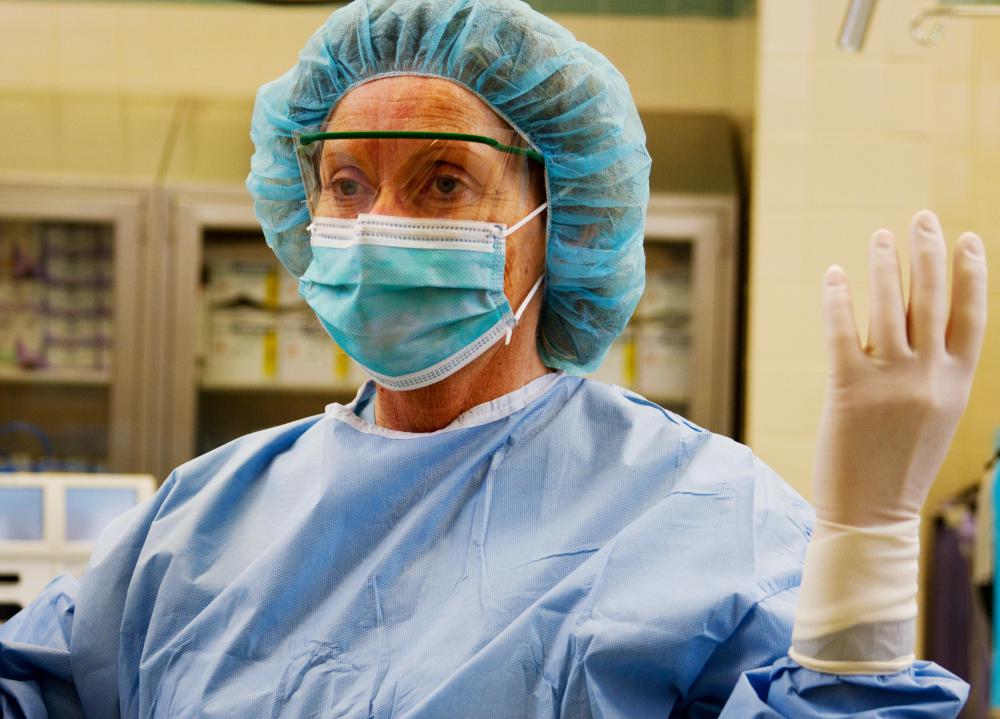At TheHealthBoard, we're committed to delivering accurate, trustworthy information. Our expert-authored content is rigorously fact-checked and sourced from credible authorities. Discover how we uphold the highest standards in providing you with reliable knowledge.
What is Colporrhaphy?
The organs and other structures of the pelvis are held in place with connective tissue such as ligaments and muscles. If these connective tissues are torn or become weak, one or more organs might prolapse, meaning that it has dislodged from its original anatomical location. Sometimes, a prolapse causes the bladder, rectum or another structure of the pelvis to protrude through the vaginal wall. This type of prolapse is treated with a colporrhaphy procedure in which the organ is returned to its proper location.
There are several types of prolapse that can be treated with colporrhaphy. A prolapse of the urethra into the vagina is called urethrocele, and a prolapse of the bladder into the vagina is a cystocele. A prolapse of the small intestine into the vagina is an enterocele, and a prolapse of the rectum is a rectocele. In the case of a urethrocele or cystocele, the cause is a defect in the fibrous tissue located between the bladder and vagina, called pubocervical fascia. A defect in the the rectovaginal fascia, the connective tissue that separates the rectum and vagina, can cause a rectocele.

Women have an increased risk of prolapse of one or more pelvic organs as they age. Other risk factors include childbirth, physical activity and hysterectomy. In addition, hormone deficiency also can increase the risk of prolapse. A woman who experiences a pelvic organ prolapse might have symptoms such as incontinence, back pain and painful bowel movements or urination. Sexual intercourse might be painful or difficult, and the walls of the vagina might bulge because of pressure from the prolapsed organ.

Colporrhaphy surgery can be performed in either of two ways, depending on the type of prolapse involved. In an anterior colporrhaphy, the surgery is performed at the front of the vaginal wall to repair a urethrocele or cystocele. In a posterior colporrhaphy, the procedure is carried out on the rear vaginal wall to repair a rectocele. Enterocele surgery can be posterior or anterior, depending on the nature of the intestinal prolapse.

In most cases, the patient will receive a general anesthetic, but if a woman is unable to receive general anesthetic for medical reasons, she can undergo local anesthesia. At the beginning of the procedure, the surgeon inserts a speculum into the vagina. This device holds the vaginal walls open to allow the surgeon to view and repair the vaginal walls more easily. The skin of the vagina is then incised so that the surgeon can locate the defect in connective tissue that is causing the prolapse. Once the defect is located, the surgeon folds and stitches the connective tissue to tighten and strengthen it, thus preventing prolapse.

Recovery time for the procedure is approximately four weeks. Depending on the nature of the prolapse, a woman might need to maintain a liquid diet for several days. She must avoid activities such as heavy lifting, prolonged standing and sexual intercourse, all of which put strain on the incision site and might cause the wound to reopen. Risks of the colporrhaphy procedure include infection and bleeding at the incision site and damage to other organs in the pelvis. It is rare for the prolapse to recur after surgery, but it is a possibility if the surgery did not corrected the defect in the connective tissue.
AS FEATURED ON:
AS FEATURED ON:



















Discuss this Article
Post your comments